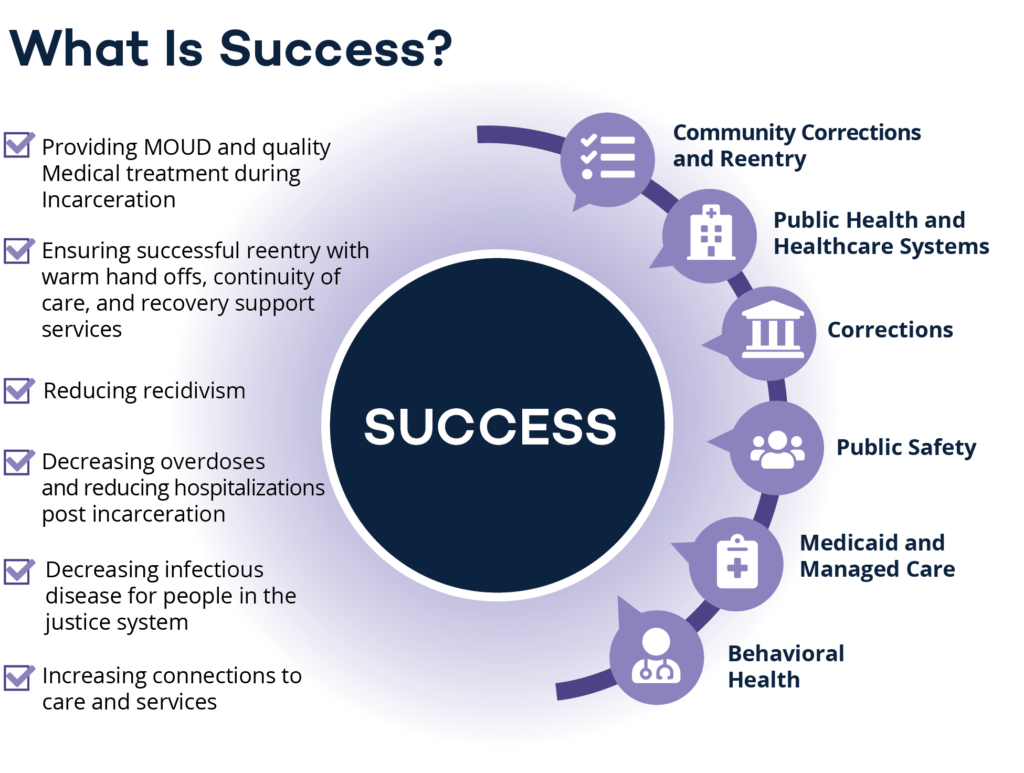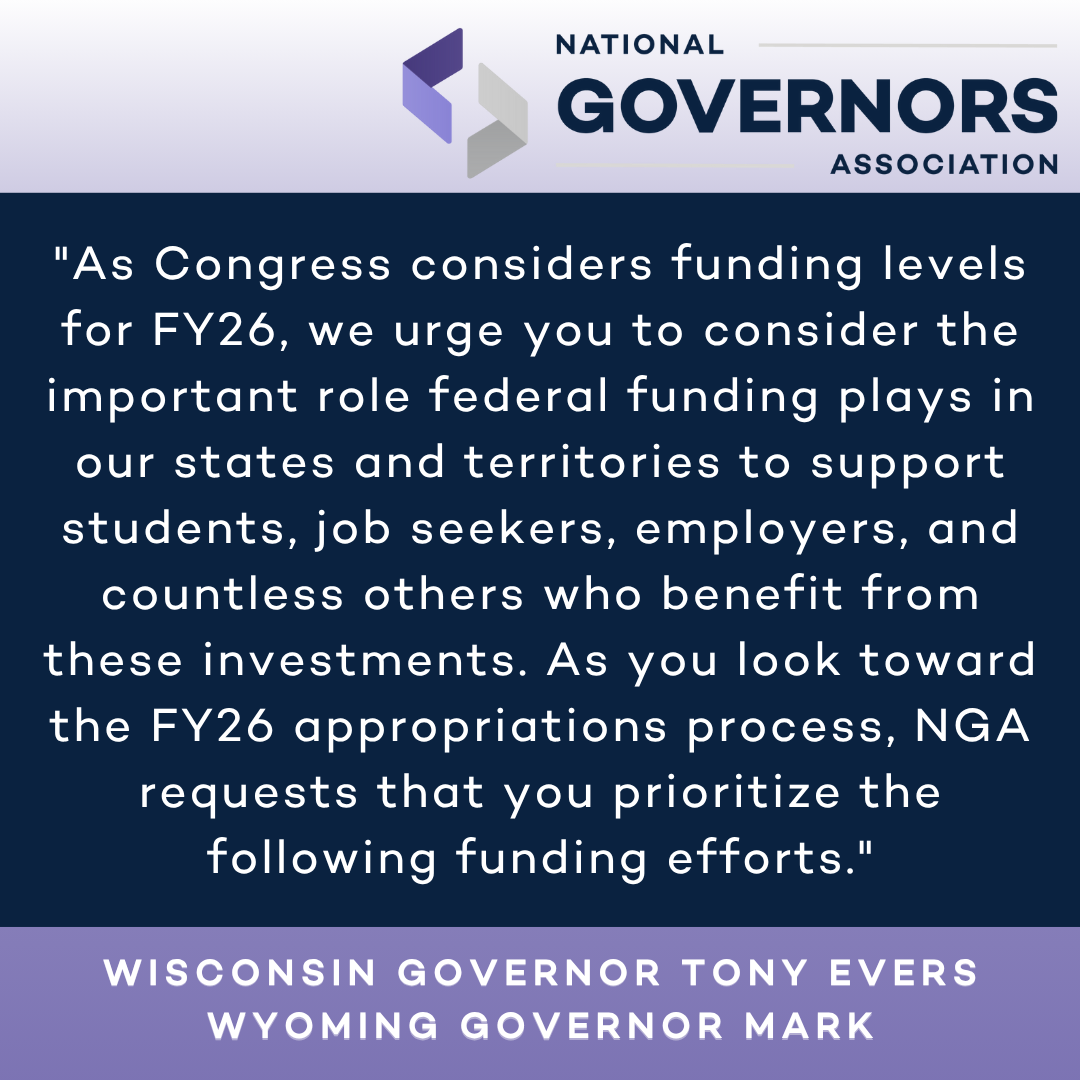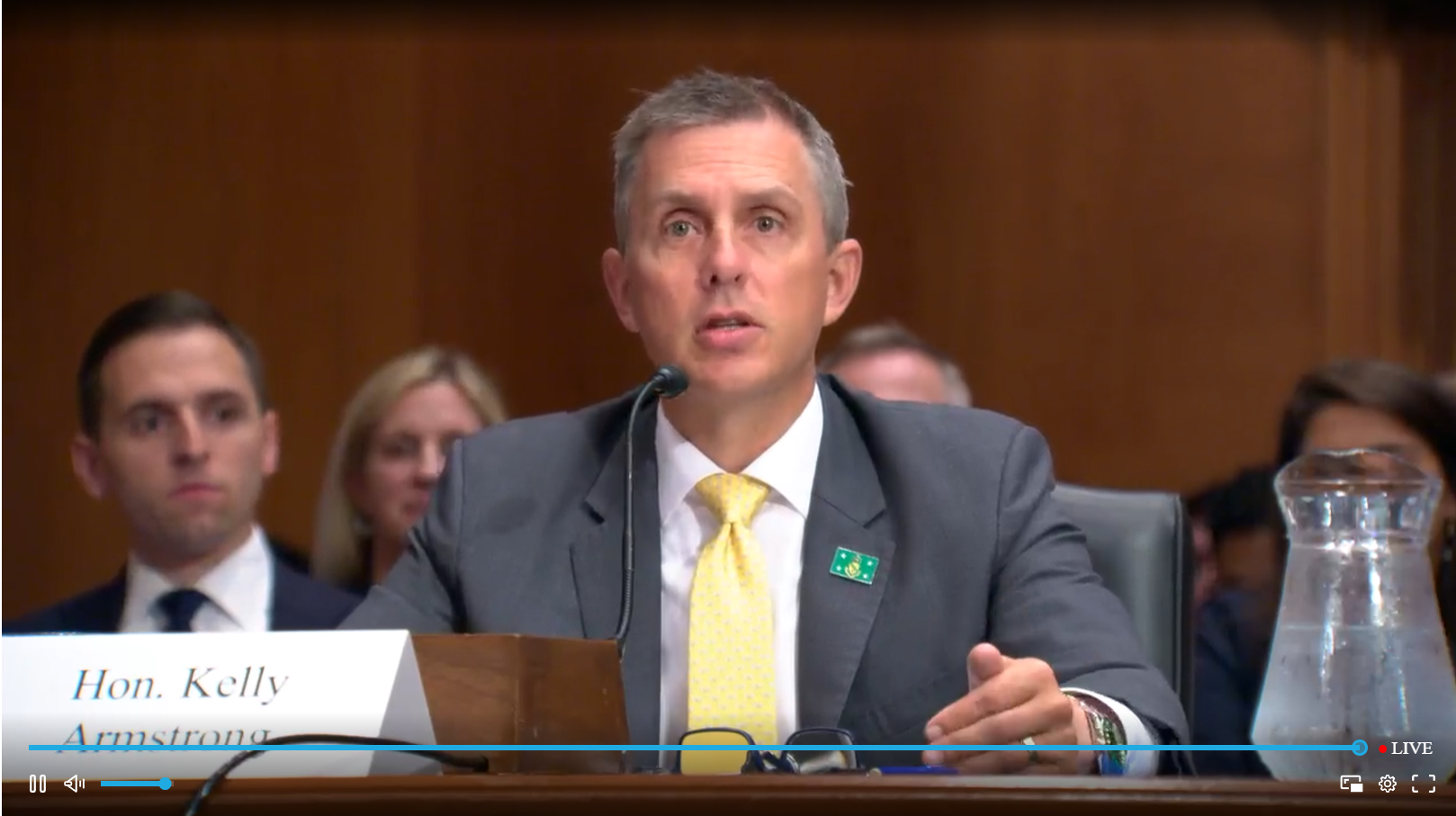This roadmap highlights existing state efforts and serves as a policy development tool for Governors and state officials seeking to improve coordination and bolster existing efforts across state agencies to address OUD among people involved in the justice system by expanding access to evidence-based medications.
Executive Summary
Drug overdose deaths in the United States continue to hit staggering highs. Over 81,000 estimated overdose deaths were recorded in the 12-month period from May 2019 to May 2020. Based on provisional data, over an estimated 72,00 Americans died from drug overdose death, and an estimated 50,000 Americans died from opioid overdoses in 2019. And in previous years, the U.S has seen astounding numbers, as over 67,000 drug overdose deaths occurred in 2018, and opioids were involved in roughly 46,800 of those overdose deaths. Additionally, in 2018, only an estimated 19.7 percent of individuals with opioid use disorder (OUD) received specialty treatment. This number has held relatively stable over the last five years and indicates a disconnect between need, access and uptake. While states made progress in addressing overdose deaths in 2018, especially by expanding access to evidence-based practices such as medications for opioid use disorder (MOUD), more work remains, especially among people in the justice system. According to the National Center on Addiction and Substance Abuse, 65 percent of the U.S. prison population meets the medical criteria for drug or alcohol use disorders, but less than 11 percent receives treatment for those illnesses.
As Governors and state officials continue to address the drivers of the overdose crisis, the high prevalence of substance use disorder (SUD) and OUD and the lack of access to treatment within and around correctional settings reveal the unique challenges facing people in the justice system. In addition, states face challenges brought on by the COVID-19 pandemic. The pandemic presented greater challenges for individuals who are dealing with SUD, created new health and safety risks to incarcerated individuals and staff working in correctional facilities and contributed to rising substance use and overdoses across communities. The evolving SUD and addiction landscape and continued challenges for people in, or impacted by, the criminal justice system underscore the need to increase treatment capacity.
For individuals with OUD, providing MOUD inside correctional facilities has a sizeable impact on overdose deaths, recidivism, and opioid use post incarceration. In 2019, the National Governors Association Center for Best Practices (NGA Center) and the American Correctional Association hosted a series of regional workshops to provide Governors’ policy advisors, state health and public safety officials, and senior correctional administrators with best practices and training to build support for and increase access to evidence-based substance use treatment services in correctional settings and upon reentry to communities. Through these efforts, states began and continue to explore sustainable financing of these initiatives with state and federal funding, which includes leveraging Medicaid and other delivery and payment systems within communities to reach these populations.
This roadmap highlights existing state efforts and serves as a policy development tool for Governors and state officials seeking to improve coordination and bolster existing efforts across state agencies to address OUD among people involved in the justice system by expanding access to evidence-based medications.
The following are key steps for supporting MOUD in corrections settings.
Gather the Key Players
Many entities, including state and local agencies and external stakeholder groups, play a role in the justice and health systems and are critical to ensuring access to treatment. Participating players may include those in leadership roles in relevant agencies (i.e., those with authority and resources to dedicate and align). Those leaders build consensus, garner stakeholder feedback and support, establish the plan, and direct implementation of the plan with designated staff support. In addition, legislative support can be critical to the ongoing stability of these programs. Strategic partnerships, such as collaborations with academic or other institutions, are key to completing baseline assessments of needs, gaps and opportunities and supporting program implementation and evaluation.

Develop an Action Plan for Integrating MOUD into Correctional Policies and Procedures
State officials can develop a comprehensive and evidence-informed approach to reduce overdose deaths and improve outcomes for justice-involved people with OUD by writing policies, employing resources and modifying workflows to implement evidence-based interventions at each stage of the justice system. A key time for intervention is while individuals are incarcerated—from intake to reentry. Fundamental steps toward accomplishing that goal include:
- • Conduct an environmental scan to inventory existing state and local efforts.
- • Perform a gap analysis and identify opportunities for improvement.
- • Set achievable goals to measure progress and ensure stakeholders are in agreement during implementation.
- • Design infrastructure and models for providing treatment in correctional settings.
- • Identify information-sharing needs to facilitate treatment and linkage to care.
Build Capacity
Raising awareness, dispelling myths, and facilitating a culture change about OUD among justice-involved populations is a key challenge for correctional leaders in implementing MOUD programs. Therefore, engaging, training and supporting correctional security and health staff, community supervision officers and incarcerated individuals and their families is an important component of capacity building.
Interagency and multidisciplinary efforts often require memoranda of understanding (MOUs), data-use agreements and other contracts or agreements to ensure common understanding and develop an institutionalized process for interagency actions. State officials can work with the Governor’s and agency legal counsel to develop such agreements.
In fiscal year 2018, the federal government appropriated approximately $7.4 billion to states to address the opioid overdose epidemic. At least 57 programs, distributed across multiple agencies, provided opioid-related funding to states. Of these programs and funding opportunities, several can support MOUD programs. In addition, while there is a prohibition against using Medicaid funds for individuals who are incarcerated, Medicaid can be crucial to care coordination and access to services upon reentry. In states with Medicaid expansion, 80 to 90 percent of the prison population is eligible for Medicaid upon release.
Implement and Evaluate
After engaging the right stakeholders, working across disciplines and entities to develop plans, state leaders will work to implement laws, policies and practices towards their goals. State leaders can require, establish or authorize treatment programs for incarcerated persons, and engage and support local jurisdictions to develop programs.
States can use a monitoring and evaluating process to assess success and effectiveness of MOUD programs. Monitoring and evaluating throughout the life cycle of the effort will highlight opportunities to employ strategies for quality improvement and adjust as needed.
Key Considerations
- 1. Access to evidence-based medications is a priority. Medication alone can be effective, and experts note that medication should not be delayed in the absence of counseling or behavioral supports.
- 2. Offering a choice among all forms of the U.S. Food and Drug Administration (FDA) approved medications for OUD treatment and providing behavioral health services and supports whenever possible represents the best practice for OUD treatment persons inside and outside correctional settings.
- 3. Fully implementing evidence-based MOUD requires making multiple forms of medication available for shared decision-making between the physician and patient, and relies on thoughtful coordination among the justice system and health and behavioral health systems.
- 4. Collaboration among the justice system and health, behavioral health and Medicaid systems at every touch point of the justice system ensures access and continuity of treatment. Existing frameworks may be leveraged, including opioid task forces and commissions.
- 5. Needs, gaps and strengths assessments of policies and practices across agencies help state leaders identify a plan of action. Undertaking a justice system mapping exercises specific to OUD interventions across touch points, such as the sequential intercept model, can assist with these efforts.
- 6. Treatment plans tailored to each individual prepare people and systems for continuity of treatment upon release. These plans include: determining health coverage whether Medicaid eligible, Social Security Disability eligible or private insurance; where the individual will be released for availability and coordination of treatment with community providers and services; risk and needs levels; and other individualized factors.
- 7. Addressing possible barriers to success in supervision systems, such as revocation policies that penalize or fail to support participation in MOUD, can improve outcomes and reduce recidivism upon release. Co-locating necessary health, behavioral health and social services with community supervision may reduce barriers for accessing services. Treatment and supervision philosophies must be proactively aligned and clearly communicated to supervision teams and patients.
- 8. Training on diversion of medications in corrections settings should be complemented with education and training aimed to reduce stigma and discrimination so that both are addressed equally.
- 9. Strategic use, alignment and braiding of state and federal funds is key to ongoing stability and success of programs and initiatives. Medicaid should be fully leveraged where applicable to support continuity of care by establishing automated data exchanges to facilitate suspension and reinstatement of Medicaid benefits upon reentry. This can be accomplished by collaboratively developing policies with Medicaid leadership and managed care partners to support timely reinstatement of benefits and funding community-based services for individuals returning to the community.
- 10. Develop a robust evaluation approach at the outset with clearly defined outcome metrics, data collection and analysis processes to inform implementation.












